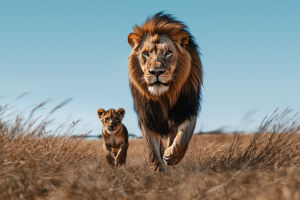Zootopia 2: Rise of the Non-Mammalians takes us back to the vibrant, bustling world of Zootopia, but this time, the city is facing a new, unprecedented challenge. The film builds on the original’s themes of diversity, unity, and acceptance, expanding them into new territories.
This guide explores the key elements of Zootopia 2, from its plot twists to its important themes, providing a comprehensive look at what makes this movie stand out.
Part 1: A New Threat - The Rise of Non-Mammalians
In Zootopia 2, the once peaceful coexistence of mammals in the city is shaken by the sudden appearance of non-mammalian creatures from the outside world. These new beings—reptiles, birds, and amphibians—bring with them unique abilities that disrupt the social order. The film explores the tension between these new creatures and the mammals who have long dominated the city. What begins as a small group of outsiders soon grows into a movement that challenges the very foundation of Zootopia’s societal structure. The rise of the non-mammalians is framed as a complex issue, one that resonates with themes of inclusion, fear of the unknown, and the resistance to change. The non-mammalians are depicted as a misunderstood group, with many of the city’s inhabitants reacting with suspicion and fear toward them. As the conflict intensifies, we see parallels to real-world issues of prejudice, inequality, and the challenges of embracing diversity.
Part 2: Judy and Nick - A Dynamic Duo
Judy Hopps and Nick Wilde return as the lovable duo that we’ve come to know and root for in the first film. In Zootopia 2, they are older, wiser, and more experienced in navigating the complexities of their world. Judy, the ambitious rabbit, and Nick, the clever fox, are now full-fledged members of the Zootopia Police Department. Their partnership is stronger than ever, but they face new challenges as the city they love begins to unravel under the pressure of the non-mammalian movement. The chemistry between Judy and Nick remains the heart of the film, offering both comedic moments and emotional depth. Their friendship is tested as they are forced to confront their own biases and assumptions about the non-mammalian creatures. Judy’s idealism and belief in justice often clash with Nick’s more cynical approach, but together they must learn how to bridge the gap between species in a city that’s growing increasingly divided.
Part 3: Themes of Unity and Diversity
Zootopia 2 continues the original film’s exploration of diversity, but this time, it deepens the conversation by addressing issues of inequality and fear of the other. As Zootopia’s social fabric begins to fray, the movie emphasizes the importance of coming together in the face of change. The introduction of non-mammalians forces the city’s citizens to confront their biases and reconsider the meaning of diversity in their world. What happens when the definition of “normal” is challenged? Can a society that thrives on diversity remain united in the face of such division? The film also touches on the power of dialogue and understanding in overcoming conflict. Through the characters' interactions—both the mammals and non-mammalians—viewers are reminded that true progress requires empathy and communication. This message is particularly relevant in today’s world, making the film not only a fun adventure for kids but a thought-provoking piece for adults as well.
Zootopia 2: Rise of the Non-Mammalians successfully builds on the foundation laid by the original film, offering a fresh and exciting adventure with important social messages. The conflict between mammals and non-mammalians serves as a powerful backdrop for exploring themes of prejudice, inclusion, and unity. Judy Hopps and Nick Wilde’s journey brings both thrilling action and emotional depth, reminding audiences of the importance of empathy and understanding in a diverse world.

